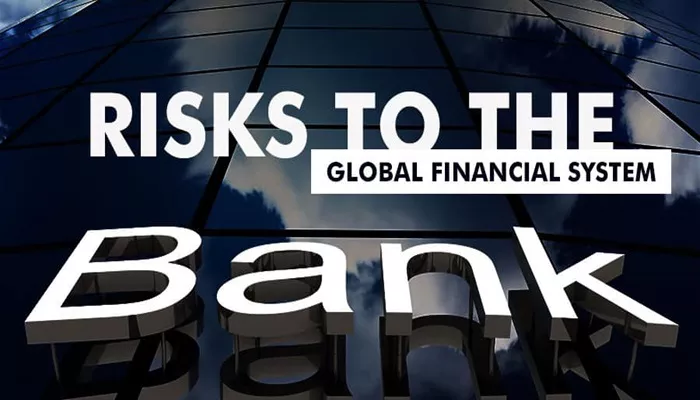In an era of mounting geopolitical tensions, shifting economic landscapes, and evolving financial systems, global financial stability faces significant new challenges. A recent report by the International Monetary Fund (IMF) reveals that risks to global financial stability are growing, driven by three critical vulnerabilities. As the financial sector becomes more complex and interdependent, understanding these underlying risks is essential for policymakers, investors, and institutions alike.
Are Capital Markets Becoming Too Concentrated?
The first concern raised by the IMF centers around the increasing concentration of capital markets, particularly the dominance of the United States. Today, the U.S. accounts for roughly 55% of the global equity market—nearly double its share two decades ago. This significant concentration means that any substantial shifts in the U.S. economy or financial markets could reverberate globally.
Despite recent corrections, asset valuations remain high across many sectors, creating a precarious situation. Elevated asset prices are vulnerable to sudden corrections, especially in a climate of persistent economic uncertainty. The potential for a broad sell-off or revaluation in major markets could ignite a chain reaction, impacting not just equities but also related financial instruments across global portfolios.
What Role Do Nonbank Financial Institutions Play?
A second area of concern is the expanding influence of nonbank financial institutions (NBFIs). These institutions—which include hedge funds, insurance companies, pension funds, and private equity firms—play a crucial role in channeling savings into investments. However, their growing presence introduces unique risks.
If asset prices were to decline sharply, NBFIs might face a wave of deleveraging, in which they are forced to sell off assets quickly to reduce their debt exposure. Such sudden market moves can amplify volatility and disrupt financial markets. While banks are traditionally seen as guardians of financial stability, their increasing interconnectedness with NBFIs raises the risk of financial contagion, where trouble in one institution or sector can quickly spread across the financial system.
How Dangerous Is Rising Sovereign Debt?
The third major vulnerability highlighted by the IMF is the growing burden of sovereign debt. Around the world, public debt has been rising faster than the development of financial infrastructure that could support and manage it effectively. This poses a particular challenge for countries with already high debt levels.
In such countries, government bond markets are more volatile, and the risk premium—measured through sovereign bond spreads—can widen significantly. Emerging markets are especially exposed to these dynamics, as they often rely on external financing. A spike in bond yields or a loss of investor confidence can make refinancing existing debt difficult or prohibitively expensive. In such a scenario, essential public spending may be threatened, and countries could face mounting fiscal stress.
What Can Be Done to Mitigate These Risks?
To address these vulnerabilities, the IMF recommends a multi-faceted approach aimed at strengthening both regulatory frameworks and institutional resilience.
One key step is improving oversight and transparency within the nonbank financial sector. The IMF urges policymakers to enhance financial reporting requirements, which would allow regulators and investors to distinguish between institutions that foster healthy financial intermediation and those that take on excessive risk or suffer from weak governance.
In the banking sector, full implementation of international standards—such as the Basel III framework—remains a top priority. These standards are designed to improve capital adequacy, risk management, and liquidity, thereby making banks more resilient in times of crisis.
Additionally, governments must strengthen debt management practices. Developing robust bond market infrastructure is essential to absorb shocks and maintain investor confidence. Countries should also focus on building a diversified investor base, lengthening debt maturities, and improving coordination between fiscal and monetary policies.
Why Is This a Global Issue?
Financial markets today are deeply interconnected. A shock in one region—such as a U.S. market correction, a collapse of a major NBFI, or a sovereign debt crisis—can quickly transmit across borders. The COVID-19 pandemic, the war in Ukraine, and recent trade tensions have all demonstrated the fragility of global financial linkages.
For instance, the IMF report also referenced recent warnings by JPMorgan regarding the threat of a global recession triggered by new U.S. tariffs. These protectionist policies could lead to a decrease in global trade, distort supply chains, and reduce economic output, further straining financial markets already under pressure.
Moreover, new technologies, rapid capital movements, and algorithmic trading have increased market volatility. Policymakers must therefore remain vigilant and adopt proactive strategies that consider not just domestic conditions but also global interdependencies.
A Call for Coordinated Action
The IMF’s latest findings underscore the urgent need for international cooperation, regulatory vigilance, and policy innovation. Financial stability cannot be taken for granted. As capital markets concentrate, NBFIs expand their reach, and sovereign debts rise, the tools needed to maintain order and confidence in the financial system must evolve accordingly.
Banks, regulators, and governments all have a role to play. Enhanced supervision, transparent financial reporting, robust regulatory frameworks, and sound public finance strategies are essential components of a stable global economy.
In the face of rising uncertainty, the focus must shift from reactive crisis management to preventive risk mitigation. Only through careful planning and coordinated global action can the international community safeguard the future of financial stability.
Related Topics:
How to Tackle Debt in a Rising Cost-of-Living Environment: Expert Tips
Will Minnesota’s New Transportation Bill Help or Hurt Transit?

